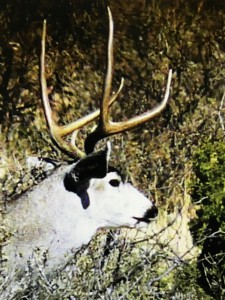 Most western states and provinces have, over the years, implemented some type of antler-point restrictions during mule deer hunting seasons. On the surface, antler restrictions make sense: If by law hunters cannot shoot young fork-horns and other immature bucks, those deer will grow older and bigger next year and the next. More mature bucks is good for the health of any herd, right? And most hunters want to shoot a deer with big antlers, right?
Most western states and provinces have, over the years, implemented some type of antler-point restrictions during mule deer hunting seasons. On the surface, antler restrictions make sense: If by law hunters cannot shoot young fork-horns and other immature bucks, those deer will grow older and bigger next year and the next. More mature bucks is good for the health of any herd, right? And most hunters want to shoot a deer with big antlers, right?
Not necessarily, say experts with the Mule Deer Working Group (MDWG). These researchers and biologists report that antler-point restrictions have proved to have limited potential to produce more trophy bucks, and they result in a myriad of challenges and problems. For example:
— Available data and experience from across the West suggest that antler restrictions result in no long-term increase in either the proportion or number of mature bucks in a herd, or the total deer population. Antler-point restrictions have been shown to actually reduce the number of trophy bucks in a herd over time by protecting only smaller-antlered young bucks.
–Antler-point restrictions do not increase fawn production or herd population size.
–Antler restrictions dramatically reduce hunter participation, success and total harvest. They can cheapen the value of young bucks by changing the threshold for success from “any buck” is good to a quest where “only a big buck will do.” Antler point restrictions may discourage hunters (especially beginning and young hunters) because it can be difficult to locate and identify legal deer.
—WORST UNINTENDED CONSEQUENCE: Antler-point restrictions increase the number of deer shot and illegally left in the field; this can be significant and has been documented in Wyoming, Colorado, Utah, Oregon, Nevada, and Montana.
The MDWG says that after decades of disappointing results, most western states and provinces have discontinued statewide antler-point restrictions (although some local jurisdictions still have them in limited areas). The two main reasons for abandoning them are: (1) unacceptable accidental-illegal kill, and (2) increased harvest mortality focused on the very age class of buck of it was intended to promote.
Today, according to the MDWG, most states and provinces have concluded that rather than antler-point restrictions, the best way to improve mule deer numbers (including number of mature bucks) and buck:doe ratios is to reduce the annual harvest through 1) a limited-quota licensing system that decreases overall total buck harvest while allowing for some level of doe harvest; or 2) setting a very short hunting season in early fall (before rut) when mature bucks are less vulnerable.
Bottomline for those of you planning a mule deer hunt anywhere out West: Anticipate more draw/quota hunts, and perhaps more and shorter seasons in early to mid-October.
Photo above: The problem with antler-point restrictions. While this 2-point buck is fully mature and should be fair game for any hunter, he would off-limits in an area where “one antler must have 3 points.” Also, while an antler-point restriction rule would unnecessarily protect this older buck, all he’ll ever be antler-wise is a 2-point… most hunters are looking for at least a mature 3-point and more typically a big 4.





